Scientific name Eucalyptus deanei Rank Species | Genus Eucalyptus Higher classification Gum trees | |
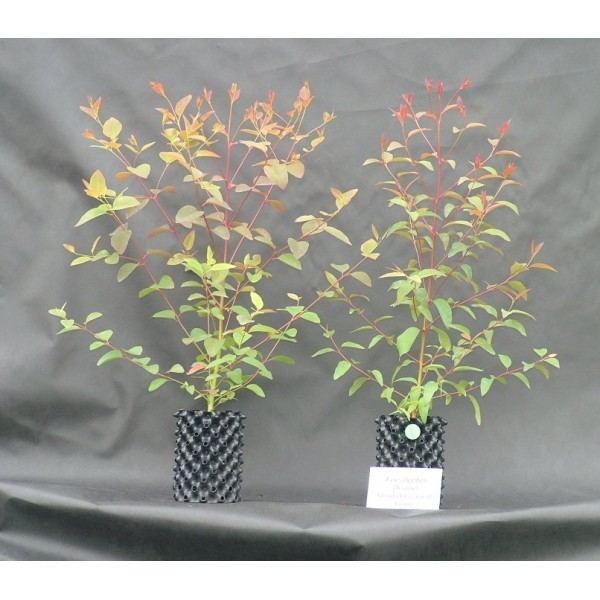 | ||
Similar Gum trees, Eucalyptus botryoides, Eucalyptus punctata, Eucalyptus resinifera, Eucalyptus agglomerata | ||
Eucalyptus deanei, the round-leaved- or mountain blue gum is a eucalyptus tree of mountain country of central New South Wales. Eucalyptus deanei is a large to very large tree, usually 45 to 65 metres tall or even taller.
Contents
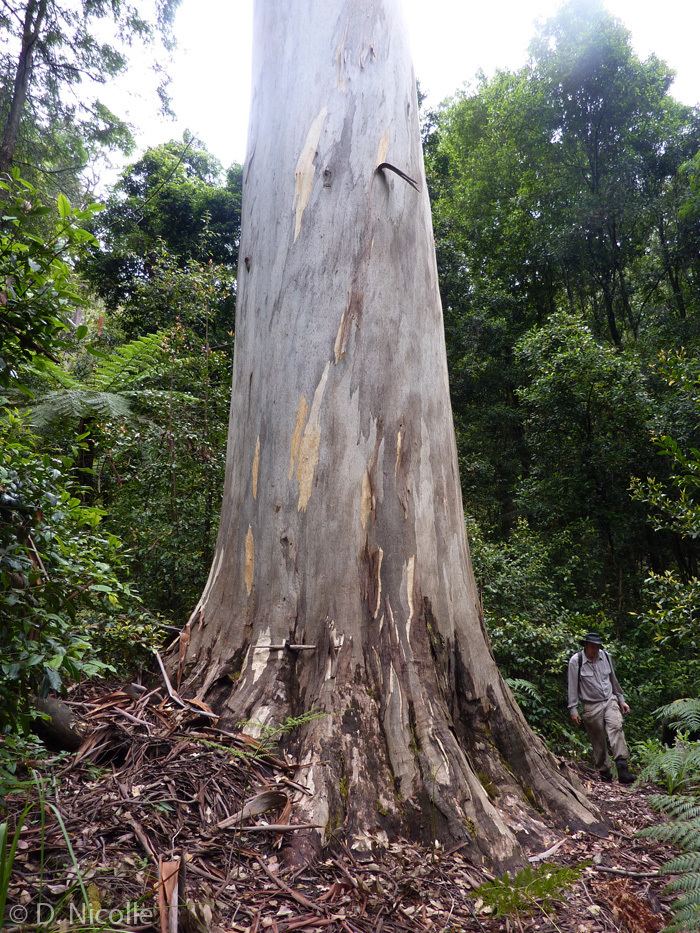
They are most famously seen at the Blue Gum Forest, in Blue Mountains National Park, and by drivers on the Mooney Mooney Bridge on the main road north from Sydney.
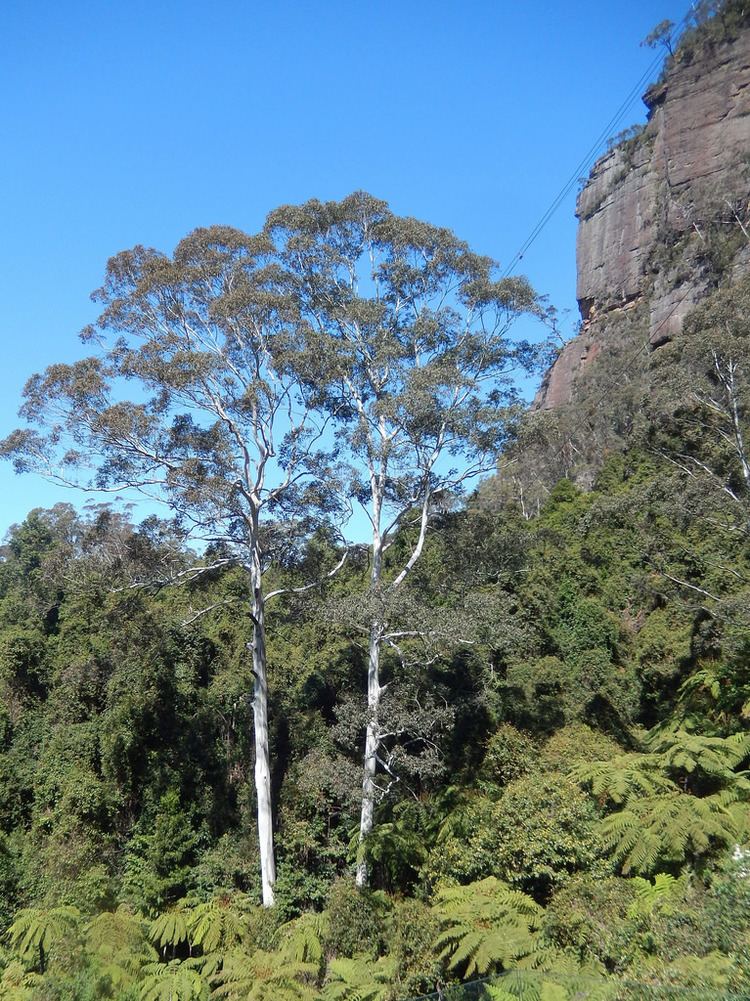
Taxonomy
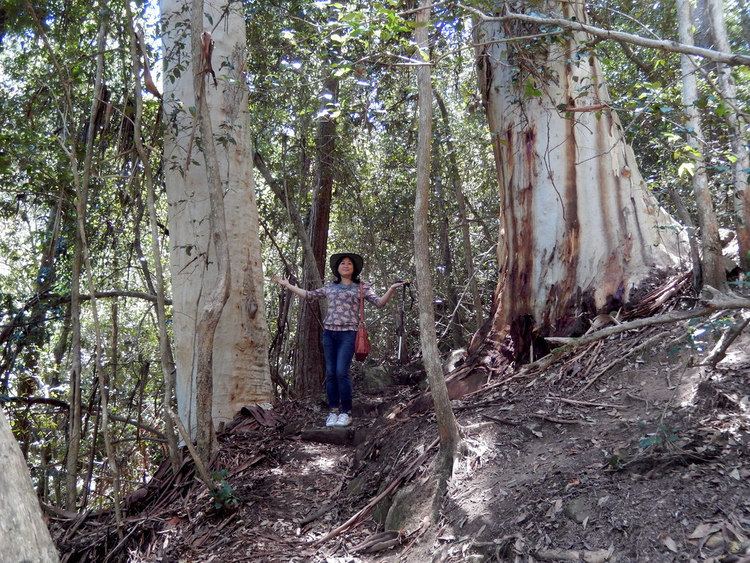
Also known by various names including Deane's gum, brown gum, mountain blue gum and round-leaved blue gum, Eucalyptus deanei was first described by Joseph Maiden and still bears its original name. It had been described earlier as Eucalyptus saligna var. parviflora by Deane and Maiden in 1899, when he and his colleague Michael Henry Vigdor went to an exploratory journey. The species name is derived from Australian engineer Henry Deane. who first collected the species in 1888. It has been classified in the subgenus Symphyomyrtus, Section Latoangulatae, Series Transversae (eastern blue gums) by Brooker and Kleinig. Its two closest relatives are the flooded gum (Eucalyptus grandis) and the Sydney blue gum (E. saligna). Its common name is derived from its roundish juvenile leaves, which also distinguish it from its closest relatives.
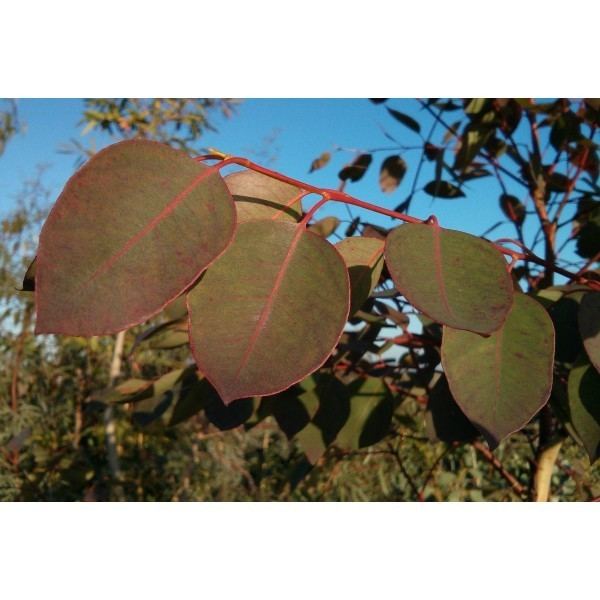
Lawrie Johnson and Ken Hill reclassified the New England population as a separate species, Eucalyptus brunnea, but the consensus is that the differences are insufficient to warrant separate status.
Description

Eucalyptus deanei generally grows as a straight and tall forest tree, growing to heights of 45 to 65 (or rarely 75) m (150–250 ft) tall with a dbh of up to 2 m (6.6 ft). In less optimal sites, it may be restricted to 20 or 30 m (66 or 98 ft) and have a thicker trunk and more branching crown. The trunk has smooth pale grey or cream bark with a 'skirt' of rougher greyish or brownish bark at the base. The dull dark green lanceolate leaves are arranged alternately along the stems and are 8–13 cm (3.1–5.1 in) long by 2–3.5 cm (0.79–1.38 in) wide. The upper leaf surface is darker than underneath. The white flowers appear in March and April, and are arranged in groups of seven to eleven in umbellasters.
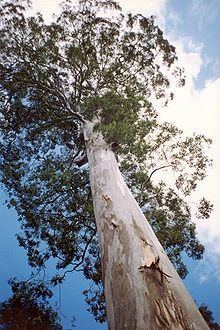
The broad and rounded juvenile leaves are 6–15 cm (2.4–5.9 in) long by 4.5–8.5 cm (1.8–3.3 in) wide. They can appear in mature foliage and canopy and give the tree crown a distinctive appearance.
Distribution and habitat

Eucalyptus deanei is found in two disjunct populations, the southern range is from Thirlmere to Broke, near Singleton, while the northern range is from Armidale on the Northern Tablelands through to the D'aguilar Range west of Brisbane. It is a dominant tree in tall forests in sheltered valleys where there is plenty of moisture, on clay or loam soils, and alluvial sands, although also grows on more elevated areas. They are most famously seen at the Blue Gum Forest, in the Grose Valley of the Blue Mountains National Park.
The botanist Ken Hill collected this species mid way between the northern and southern populations, west of Comboyne.
Associated trees include Sydney blue gum (E. saligna), grey gum (E. punctata), messmate (E. obliqua), manna gum (E. viminalis), river peppermint (E. elata), silvertop stringybark (E. laevopinea), New England blackbutt (E. andrewsii), rough-barked apple (Angophora floribunda), turpentine (Syncarpia glomulifera) and forest oak (Allocasuarina torulosa).
Notable specimens
Located near Woodford in the Blue Mountains, the largest known was measured in 1978 at 78 metres tall, and remeasured in 2010 at 71 metres tall with a diameter at breast height of 2.5 metres. Another large tree measures 65 m high with a 6 m diameter trunk in the Blue Gum Forest in the Grose Valley near Blackheath. Over 600 years old, it is a local landmark for bushwalkers.
